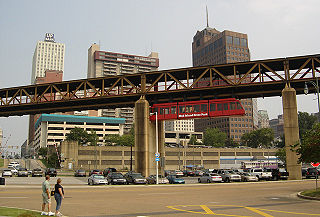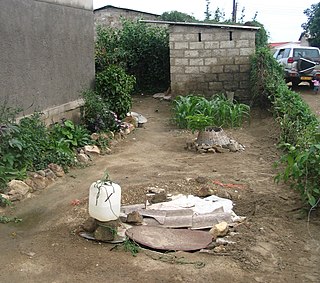
A monorail is a railway in which the track consists of a single rail or a beam.

École des Ponts ParisTech is a university-level institution of higher education and research in the field of science, engineering and technology. Founded in 1747 by Daniel-Charles Trudaine, it is one of the oldest and one of the most prestigious French Grandes Écoles.

Ashok Gadgil Is the Andrew and Virginia Rudd Family Foundation Distinguished Chair and Professor of Safe Water and Sanitation at the University of California, Berkeley. He is a Faculty Senior Scientist and has served as Director of the Energy and Environmental Technologies Division at Lawrence Berkeley National Laboratory.
Amy Smith is an American inventor, educator, and founder of the MIT D-Lab and senior lecturer of mechanical engineering at MIT.

Arsenic contamination of groundwater is a form of groundwater pollution which is often due to naturally occurring high concentrations of arsenic in deeper levels of groundwater. It is a high-profile problem due to the use of deep tube wells for water supply in the Ganges Delta, causing serious arsenic poisoning to large numbers of people. A 2007 study found that over 137 million people in more than 70 countries are probably affected by arsenic poisoning of drinking water. The problem became serious health concern after mass poisoning of water in Bangladesh. Arsenic contamination of ground water is found in many countries throughout the world, including the US.
Abul Hussam is the inventor of the Sono arsenic filter. He is a chemistry professor at George Mason University (GMU) in Fairfax, Virginia, and a member of advisory board at Shahjalal University of Science and Technology.
Juropani (जुरोपानी) is a village development committee of the Jhapa district of Nepal.
The CSIR-National Environmental Engineering Research Institute (CSIR-NEERI) is a research institute created and funded by Government of India. It was established in Nagpur in the year 1958 with focus on water supply, sewage disposal, communicable diseases and to some extent on industrial pollution and occupational diseases found common in post-independent India. NEERI is a pioneer laboratory in the field of environmental science and engineering and part of Council of Scientific and Industrial Research (CSIR). NEERI has five zonal laboratories at Chennai, Delhi, Hyderabad, Kolkata and Mumbai. NEERI falls under the Ministry of Science and Technology (India) of the central government. The NEERI is an important partner organisation in India's POPs National Implementation Plan (NIP).

With abundant water resources, Bangladesh faces various water contaminations mainly caused by pollutants, bacteria, and pesticides. Historically, water sources in Bangladesh came from surface water contaminated with bacteria. Drinking infected water resulted in infants and children suffering from acute gastrointestinal disease that led to a high mortality rate. According to UNICEF, 38.3% of Bangladeshis drink unsafe water from bacteria-contaminated sources. Bangladesh is facing an acute reliable drinking water scarcity. Bangladesh's surface and ground water are highly saline due to rising sea levels.
Humanitarian engineering is the application of engineering for humanitarian aid purposes. As a meta-discipline of engineering, humanitarian engineering combines multiple engineering disciplines in order to address many of the world's crises and humanitarian emergencies, especially to improve the well-being of marginalized populations.
EcoCAR: The NeXt Challenge was a yearly competition from 2008 to 2011, that built on the 19-year history of U.S. Department of Energy (DOE) advanced vehicle technology competitions by giving engineering students the chance to design and build advanced vehicles to demonstrate cutting-edge automotive technologies, with the goal of minimizing the environmental impact of future personal transportation. The DOE has again joined General Motors (GM), the Government of Canada, and other sponsors for this new competition series, named the EcoCAR Challenge. Argonne National Laboratory, a DOE research and development facility, will organize and operate the EcoCAR Challenge. Some previous types of advanced vehicle technology competitions include FutureTruck, FutureCar, and Challenge X. these type of competitions are usually supported by one or more of the Big Three American Automobile Manufacturers.

A suspension railway is a form of elevated monorail in which the vehicle is suspended from a fixed track, which is built above streets, waterways, or existing railway track.

Shweeb is a proposed personal rapid transit network in New Zealand, based on human-powered monorail cars. The project prototype was originally designed and implemented in Rotorua, New Zealand, as a leisure attraction.

Creo is a family of Computer-aided design (CAD) apps supporting product design for discrete manufacturers and is developed by PTC. The suite consists of apps, each delivering a distinct set of capabilities for a user role within product development.
Arjun College of Technology located at Coimbatore, Tamil Nadu, India, is a private self-financing engineering institute. It was established in 2013 as part of the Arjun Group of Concerns. The college is approved by AICTE, New Delhi and affiliated to the Anna University, Chennai.

Navielektro /nɑvielektro/ is a privately owned Finnish company specialized in development and maintenance of situational awareness, surveillance and communication systems for both civilian and military purposes. Navielektro develops, manufactures and provides maintenance for a range of various radar and related sensors and communication equipment.
Jhuruli is a village in Basirhat II CD Block in Basirhat subdivision of North 24 Parganas district of the Indian state of West Bengal.

HelioPower, Inc. is a US-based provider of integrated energy solutions for residential, commercial, industrial, public sector and non-profit organizations. Founded in 2001, HelioPower also develops proprietary projects with third-party offtakers and currently owns and operates more than 100 energy systems at facilities like the Tech Museum of Innovation in San Jose & Ronald McDonald House in San Diego.

Groundwater pollution occurs when pollutants are released to the ground and make their way into groundwater. This type of water pollution can also occur naturally due to the presence of a minor and unwanted constituent, contaminant, or impurity in the groundwater, in which case it is more likely referred to as contamination rather than pollution. Groundwater pollution can occur from on-site sanitation systems, landfill leachate, effluent from wastewater treatment plants, leaking sewers, petrol filling stations, hydraulic fracturing (fracking) or from over application of fertilizers in agriculture. Pollution can also occur from naturally occurring contaminants, such as arsenic or fluoride. Using polluted groundwater causes hazards to public health through poisoning or the spread of disease.

Abhijit Mukherjee is an Indian professor, scientist and currently Professor of Geology and Geophysics and the School of Environmental Science and Engineering of IIT Kharagpur. He has been selected for Shanti Swarup Bhatnagar Prize for Science and Technology in 2020 in the field of Earth Atmosphere Ocean and Planetary Sciences.